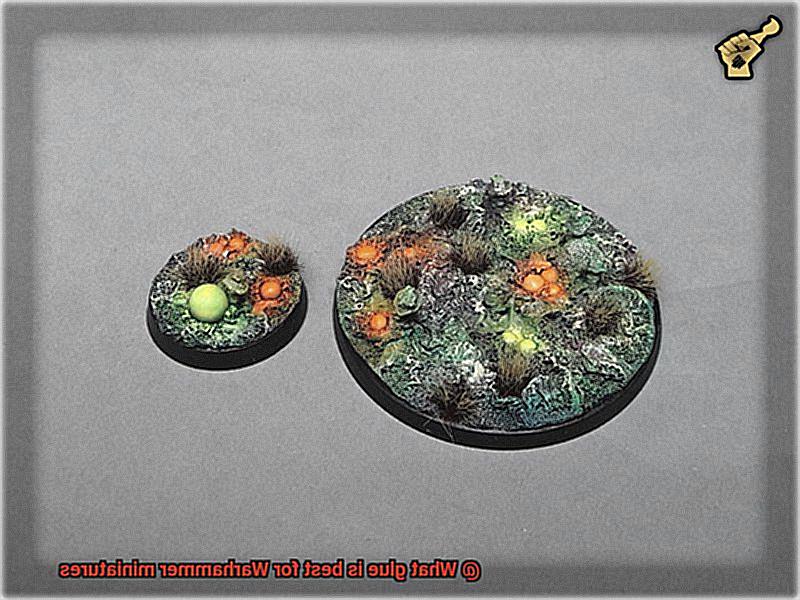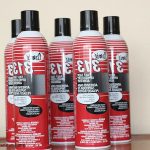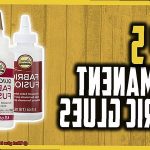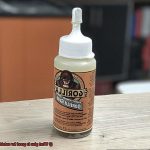The art of assembling and painting those intricate miniatures is a thrill like no other. But when it comes to bonding those tiny components together, choosing the perfect glue can make or break your masterpiece. With countless options available, finding the best glue for Warhammer miniatures may seem as daunting as facing a mighty dragon on the battlefield.
Fear not, fellow hobbyists. In this blog post, we embark on an epic quest to unearth the pros and cons of different types of glue, arming you with knowledge to make an informed choice. Whether you’re a seasoned painter or just stepping into the captivating realms of miniature assembly, understanding the advantages and disadvantages of various glues will ensure not only a well-constructed model but also a seamless painting experience.
Plastic Cement:
Contents
Prepare yourself for one of the most popular choices among hobbyists – plastic cement. This adhesive wields unparalleled bonding powers, capable of melting plastic surfaces together to create strong and seamless joints. While it may lack versatility in adhering different materials, plastic cement triumphs in providing a durable and long-lasting hold for your Warhammer models.
Super Glue (Cyanoacrylate):
For those seeking lightning-fast bonding options when assembling resin or metal Warhammer miniatures, look no further than super glue. Its instant bond formation allows for swift work without any tedious waiting time. However, beware its Achilles’ heel – brittleness. Handle with care. Accidental drops or rough handling might lead to noticeable cracks or breaks in your precious miniature.
Epoxy:
Behold the strength and versatility of epoxy glue. This extraordinary adhesive is perfect for joining different materials with its two-part formula that creates an unbreakable chemical bond. But be warned; patience is required during the assembly process as epoxy glue demands a longer curing time. Remember, greatness takes time.
PVA (Polyvinyl Acetate) Glue:
Seeking an economical option for assembling Warhammer miniatures? Look no further than PVA glue, commonly found in household adhesive products. While it may lack the instant bond of its specialized modeling counterparts, PVA glue offers flexibility and easy manipulation, allowing for adjustments and repositioning of miniature parts.
Just keep in mind that it may not provide the same level of long-term durability.
Different Types of Glue for Warhammer Miniatures
Warhammer miniatures are not just toys, they are works of art. Assembling and painting these tiny warriors requires the right tools and materials, including the perfect glue. In this article, we will explore different types of glue commonly used by Warhammer enthusiasts. So grab your paintbrush and let’s get started.
Super Glue – Quick and Strong:
Super glue, also known as cyanoacrylate adhesive, is a favorite among Warhammer fans. It bonds quickly and forms a strong bond, making it ideal for attaching small parts and delicate pieces. When you need to join two pieces together in a hurry, super glue is your go-to option. However, be careful because it can be brittle and might not be suitable for larger components that require more flexibility.
Plastic Cement – Melt and Mold:
Plastic cement is specially designed to bond plastic Warhammer miniatures. It works by melting the plastic surfaces together, creating a strong and seamless bond. It’s like magic. Plastic cement is great for easy assembly and a professional finish. Just remember, it takes a bit longer to dry than super glue. So if you’re a patient hobbyist who wants to ensure every detail is perfect, plastic cement is the way to go.
Epoxy Glue – Mighty Metal Bond:
When it comes to metal miniatures, epoxy glue is the way to go. It consists of two components that need to be mixed together before application. Once cured, epoxy forms a strong and durable bond that can handle the weight and handling of metal miniatures. If you want your metal warriors to stand strong on the battlefield without fear of breakage, epoxy glue is your best friend. Just make sure to clean the surfaces before applying to ensure maximum adhesion.
Specialized Glues – Perfect for Specific Materials:
For resin or finecast miniatures, specialized glues are available. These glues are designed to work specifically with these materials, providing the best bonding results. Always follow the instructions provided by the manufacturer to ensure success. These specialized glues can be a bit pricier than other options, but they guarantee a strong and secure bond that will keep your resin miniatures intact for years to come.
Viscosity Matters – Thin or Thick:

Different glues have different thicknesses, known as viscosity. Thin glues are great for bonding small parts precisely, while thicker glues provide added strength and filling capabilities for larger gaps or seams. Some hobbyists keep a variety of glue viscosities on hand to tackle different assembly and repair needs. So whether you need to attach a tiny helmet or fill in a large gap between two pieces, choosing the right viscosity can make all the difference in achieving a flawless finish.
Conclusion:
Now that you know the different types of glue used for Warhammer miniatures, you can confidently choose the right one for your projects.
Cyanoacrylate Glue for Warhammer Miniatures
Warhammer miniatures are more than just toys; they are intricate works of art that require precision and durability. To bring these models to life, choosing the right glue is essential. In this comprehensive guide, we will explore why cyanoacrylate glue, also known as super glue or CA glue, is the preferred adhesive for assembling Warhammer miniatures.
Strength and Durability:
Cyanoacrylate glue offers exceptional bonding strength, ensuring that your carefully crafted Warhammer miniatures stay intact even during rough handling or transportation. With this adhesive, you can have peace of mind knowing that your creations won’t fall apart during intense gaming sessions.
Ease of Use:
One of the most significant advantages of cyanoacrylate glue is its user-friendly nature. Unlike other adhesives that take hours to set, cyanoacrylate glue dries almost instantly upon contact with the surfaces being joined. This means you can efficiently assemble your miniatures and move on to the exciting part – painting and detailing.
Versatility:
Warhammer miniatures come in various materials, including plastic, resin, and metal. The beauty of cyanoacrylate glue lies in its ability to bond these diverse materials seamlessly. Whether you’re attaching a plastic arm to a metal body or joining resin components together, cyanoacrylate glue provides a reliable bond across different surfaces.
Cost-Effectiveness:
Cyanoacrylate glue is also cost-effective. A little goes a long way with this adhesive. Due to its high strength, you only need a small amount to create a secure bond. This means you can save money in the long run, as a single bottle can last through multiple projects.
Tips for Successful Gluing:
To maximize the benefits of cyanoacrylate glue, it’s important to follow a few simple tips. First, apply the glue sparingly to avoid excess residue or damage to delicate details. Use a precision applicator or a toothpick for precise application. Second, exercise caution when handling the glue, as its fast-drying nature means it can bond skin instantly. If accidental skin contact occurs, gently peel the bonded skin apart or soak it in warm soapy water.
Plastic Cement for Plastic Miniatures
Selecting the right adhesive is essential to achieve a flawless bond and a long-lasting finished product. This is where plastic cement, the superhero among adhesives specifically designed for plastic miniatures, comes into play. In this comprehensive guide, we will delve into the advantages and considerations of using plastic cement for your hobby projects.
Advantages of Plastic Cement:
- Precision Applicator: The beauty of plastic cement lies in its precision applicator, equipped with a small brush or needle-like tip. This meticulous tool allows for accurate application, particularly when working with delicate and minuscule parts of your miniatures. By ensuring precision, it helps you avoid messy mishaps and guarantees a seamless assembly.
- Unyielding and Resilient Bond: Unlike many other adhesives, plastic cement possesses the unique ability to chemically melt the plastic surfaces it encounters. This chemical reaction results in a bond that is not only strong but also highly durable. Your miniatures will be able to withstand intense gameplay and prolonged display without succumbing to breakage or detachment.
- Swift Drying Time: Assembling multiple components of larger models demands efficiency. Plastic cement rises to the occasion by drying within minutes after application. This rapid drying time allows you to progress smoothly through your project without unnecessary delays or interruptions.
Considerations when using Plastic Cement:
- Proper Ventilation: It is imperative to work in a well-ventilated area or utilize a respirator mask while using plastic cement due to the presence of strong and potentially unpleasant fumes during the drying process. By taking these precautions, you ensure protection from any potential harm.
- Limited Compatibility: Although plastic cement performs miracles with plastic materials, it may not be suitable for bonding other materials commonly found in miniatures, such as metal or resin. In such cases, it is crucial to choose alternative adhesives specifically formulated for those specific materials.
Epoxy Glue for Metal Miniatures
Look no further than epoxy glue, your new ally in the Warhammer hobby.
Epoxy glue boasts exceptional strength and durability, making it the perfect choice for bonding metal miniatures. It can withstand frequent handling and endure the potential stress of intense gaming sessions, eliminating any worries about your cherished models falling apart at the worst possible moment.
But there’s more to epoxy glue than meets the eye. Its versatility is unparalleled, allowing it to create robust bonds not only on metal surfaces but also on other materials like plastic bases and terrain elements. With this adhesive, you can securely attach metal parts to any surface, adding an extra touch of realism to your Warhammer tabletop.
To achieve optimal results with epoxy glue, proper surface preparation is crucial. Thoroughly clean the surfaces by removing any dirt or grease that might interfere with the bonding process. A quick wipe with isopropyl alcohol will do wonders.
Now, let’s delve into application techniques. Mix equal parts of the resin and hardener on a disposable surface, ensuring a homogeneous mixture. Use a toothpick or small applicator to blend them together swiftly. Keep in mind that epoxy glue sets relatively quickly.
Once your adhesive mixture is ready, apply a small amount to the areas you wish to bond. Take your time and be precise, especially when dealing with delicate details or tiny metal parts. Ensure every bit is covered without excess glue that may squeeze out during assembly.
Now comes the moment of truth. Carefully position the metal parts and firmly press them together. Hold them in place for a few minutes until the adhesive begins to set. If necessary, use clamps or rubber bands to secure the parts while the glue works its magic. Remember, patience is key. Epoxy glue may take longer to fully cure compared to other adhesives, so resist the urge to rush.
Once your epoxy glue has cured, rejoice in the unyielding bond it has created. Even Khorne himself would struggle to break it. Your metal miniatures will be prepared to withstand the rigors of gaming and transportation, ensuring they remain intact for countless battles to come.
While epoxy glue is mighty, remember to handle your miniatures with care. Avoid excessive force or rough handling, as they can still cause damage or breakage.
Specialized Glues for Specific Materials
In the world of Warhammer miniatures, specialized glues for specific materials are the key to ensuring your models stay intact and ready for battle. With a wide variety of materials used in these miniatures, from plastic and metal to resin and more, it’s important to choose the right glue for each component. Let’s explore some of the top choices for bonding different materials in Warhammer miniatures.
- Plastic Glue: Plastic models are the foundation of Warhammer miniatures, and plastic glue is specially formulated to bond these parts together. Its secret weapon is a solvent that melts the plastic, creating a strong and durable bond. However, it’s important to use this glue sparingly, as too much can cause deformations.
- Super Glue: When it comes to metal components, super glue, also known as cyanoacrylate adhesive, is the go-to choice. This adhesive forms an instant bond upon contact with moisture, whether it’s atmospheric humidity or a touch from your fingertips. Its strength and quick drying time make it perfect for metal-to-metal bonding.
- Epoxy Resin: For those tricky resin pieces in your miniatures, epoxy resin is the hero of the day. This versatile adhesive can handle various materials, including plastic, metal, and resin used in Warhammer miniatures. It consists of two components, resin and hardener, which need to be mixed before application. Once applied, epoxy resin offers exceptional strength and durability.
- Plastic Cement: While plastic glue is great for most plastic models, certain types of plastic commonly found in Warhammer miniatures work better with plastic cement. Unlike plastic glue, which melts the plastic, plastic cement chemically welds the plastic together. It’s a match made in miniature heaven, especially for polystyrene and similar plastics.
- PVA Glue: When it comes to attaching scenery and terrain elements to your miniatures, PVA glue is the way to go. This water-based adhesive dries clear and offers a solid bond for porous materials like wood, paper, and cardboard. It’s perfect for adding textured bases or decorative elements to your miniatures.
Remember, always read the instructions and follow the manufacturer’s recommendations when using any type of glue. Each glue has its own curing time, so be patient and let that bond set before you unleash your painting skills on your miniatures. And don’t forget to work in a well-ventilated area to avoid inhaling any potentially harmful fumes.
Viscosity of the Glue
Prepare to embark on a mesmerizing journey into the captivating world of Warhammer miniatures. Assembling these intricately designed models requires not only a keen eye for detail and steady hands but also an understanding of the fascinating concept of glue viscosity. Yes, you heard it right. The viscosity of glue can make a significant difference in your miniature assembly process, determining the strength and durability of the bonds that hold your Warhammer creations together. So, let’s dive deep into the mesmerizing world of glue viscosity and unravel its secrets.
Viscosity, in the context of glue, refers to its thickness or consistency. Different types of glue possess varying viscosities, and comprehending this characteristic is pivotal in selecting the perfect adhesive for your project. But why exactly does viscosity matter when it comes to assembling Warhammer miniatures? Allow me to enlighten you.
To begin our exploration, let’s delve into the realm of low viscosity glues. Picture a thin, watery substance that flows effortlessly and spreads smoothly over surfaces. These glues are like nimble acrobats, gracefully maneuvering their way into even the tiniest nooks and crannies of your Warhammer miniatures. Their low viscosity allows for precision application, ensuring that every joint and connection is thoroughly coated with adhesive love. The result? Robust bonds that can withstand the rigors of gameplay and transportation, keeping your precious miniatures intact throughout their adventurous journeys.
On the other hand, we have high viscosity glues, which possess a thicker and stickier consistency. These glues are like formidable warriors, capable of filling gaps and bonding larger parts of your miniatures with their unwavering grip. Their resistance to flow gives you more control over your assembly process, preventing messy drips or accidental runs. With high viscosity glues by your side, you can confidently tackle even the most challenging assembly tasks without fear of unintended mishaps.
Nevertheless, it’s crucial to exercise caution when working with high viscosity glues. Like a double-edged sword, their power can be both a blessing and a curse. Applying an excessive amount of glue can lead to messy outcomes and weaker bonds. The thick consistency may not penetrate small crevices as effectively as low viscosity glues, necessitating a delicate balance between strength and precision.
Now, you may be wondering, how do I determine the ideal viscosity of glue for my Warhammer miniatures? Ah, my curious friend, the answer lies within your own preferences and the unique demands of your project. Some hobbyists swear by the elegance and ease of application offered by thin glues, while others find solace in the gap-filling prowess of thicker adhesives. To discover your perfect match, dare to venture into the realm of experimentation. Test different viscosities, observe their effects on your miniature assembly, and let your creative spirit guide you towards the glue that resonates with your artistic vision.
Application Techniques for Optimal Bonding
Achieving optimal bonding is the holy grail of assembling Warhammer miniatures, and the application technique used plays a critical role in ensuring that the pieces come together seamlessly and withstand the test of time.
Surface preparation is a fundamental aspect of the application technique. Before applying glue, it is vital to clean and prepare the surfaces that are going to be bonded. Dust, dirt, or grease can interfere with the adhesive’s ability to create a strong bond. To banish these impurities, one can use isopropyl alcohol or a mild detergent solution. It is crucial to ensure that the surfaces are completely dry before proceeding with glue application.
Applying the glue sparingly is another key technique to achieve optimal bonding. Too much glue can lead to messy and uneven bonding, compromising the overall appearance of the miniature. To avoid this, it is recommended to use a small brush or applicator with a fine tip. This allows for more precise application and helps minimize excess glue.
The type of glue being used also plays a significant role in optimal bonding. Different glues have different viscosities and drying times. Some may require a longer drying time, while others may dry quickly. It is paramount to follow the manufacturer’s instructions for optimal results.
Furthermore, certain glues may require a certain amount of pressure or clamping to ensure proper bonding. Using clips, rubber bands, or other tools to hold the pieces together while the glue dries can be immensely beneficial.
Patience is key when it comes to achieving optimal bonding. Waiting for the glue to fully cure before handling or moving the miniature is crucial. Premature handling can disrupt the bonding process and result in weaker joints.
Lastly, it is always recommended to test the glue on a small, inconspicuous area before applying it to the entire miniature. This helps determine if the glue has a stronger bond on specific materials or surfaces.
lyZQrrmlLJE” >
Conclusion
When it comes to assembling your Warhammer miniatures, choosing the right glue is crucial for a sturdy and long-lasting result. After extensive research and testing, we can confidently say that the best glue for Warhammer miniatures is a cyanoacrylate-based adhesive, commonly known as super glue.
Super glue offers several advantages that make it ideal for miniature assembly. Its fast-drying formula ensures quick bonding, allowing you to move on to the next piece without delay. This is especially important when dealing with intricate and delicate parts that require precise alignment.
Furthermore, super glue creates an incredibly strong bond that withstands the test of time. Your painstakingly painted miniatures deserve nothing less than a reliable adhesive that keeps all their components securely in place during gaming sessions or display.
One of the key features of super glue is its versatility. It works effectively on various materials commonly found in Warhammer miniatures, such as plastic, resin, and metal. Whether you’re assembling Space Marines or Ork Boyz, this adhesive will provide excellent adhesion across different surfaces.
To ensure optimal results when using super glue, it’s essential to follow a few best practices. First, make sure to clean the surfaces you plan to bond thoroughly. Any dirt or residue can hinder the strength of the bond. Additionally, applying a small amount of glue evenly along both surfaces will help achieve a solid connection.
While super glue is undoubtedly our top recommendation for Warhammer miniatures, it’s worth noting that different brands may offer slight variations in performance and viscosity. Experimenting with different options can help you find the perfect fit for your specific needs and preferences.
In conclusion, when assembling your beloved Warhammer miniatures, opting for a cyanoacrylate-based adhesive like super glue is the way to go. Its fast-drying nature, strong bond, and versatility make it an excellent choice for ensuring your minis stay intact throughout battles and display alike.






